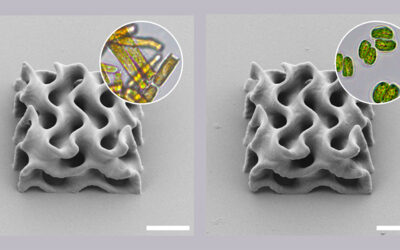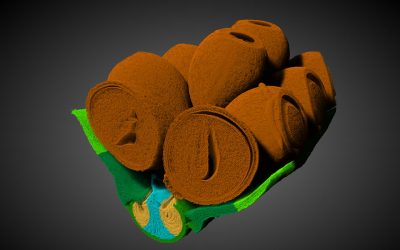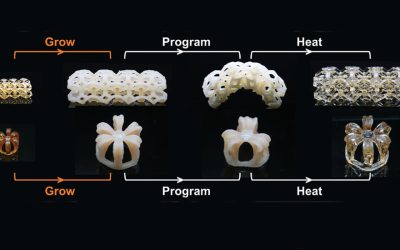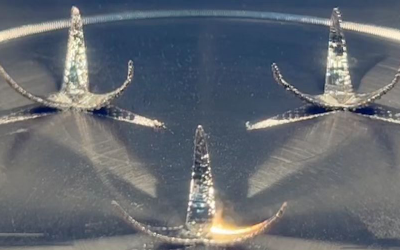Researchers from KIT and Evonik Industries have developed a novel polymer network that heals itself at relatively low temperatures. The healing process is very quick and can be repeated as often as necessary.
With applications ranging from scratches in vehicle finishes or cracks in polymer products, self-healing materials can repair themselves by restoring their original molecular structure after they have been damaged. Scientists at the Karlsruhe Institute of Technology and at Evonik Industries have developed a chemical curing reaction that allows material to heal well within a short period of time upon gentle heating.
To synthesize self-healing materials, the Karlsruhe research group led by Christopher Barner-Kowollik exploited the potential of reversible chemical reactions to link functionalized fibers or small molecules into a network. If damaged, these switchable networks, as they are called, break down into their starting components and then reassemble. The advantage in this approach is that the self-healing mechanism can be triggered any number of times in the presence of conditions such as heat, light, or the addition of chemicals. “Our method uses absolutely no catalysts or any additives of any kind,” says Professor Barner-Kowollik. As the chair of Preparative Macro-molecular Chemistry at KIT, Barner-Kowollik studies the synthesis of macromolecular chemical compounds.
Working for roughly four years, the research group he leads has developed a novel polymer network in collaboration with the Composites Project House operated by Creavis, the strategic innovation unit at Evonik. This network exhibits excellent healing properties after just a few minutes at relatively low temperatures between 50°C and 120°C. Reducing the amount of time required and optimizing the external conditions under which healing proceeds are among the key challenges faced by researchers studying self-healing materials. One success of the healing cycle that they developed, the KIT researchers feel, is the large number of intermolecular bonds that quickly close back up upon cooling. In addition, mechanical studies such as tensile and strength tests confirm that the original properties of the material can be completely restored. “We were able to demonstrate that bonds in the test objects were even stronger after the first healing than they had been prior to that,” says Barner-Kowollik.
Self-healing properties can be incorporated into a broad spectrum of known plastics. In addition to self-healing, however, the starting material also acquires one further beneficial property: flowability increases at elevated temperatures, making the resulting substance well suited to molding processes. One application of this is the production of parts from fiber-reinforced plastics for use in the automotive and aviation industries.
The consortium that developed the new curing reaction is composed of chemical manufacturer Evonik Industries and various academic partners, including the Leibniz Institute of Polymer Research in Dresden, Germany, and the Australian National University in Canberra, Australia.
Source: Evonik
















